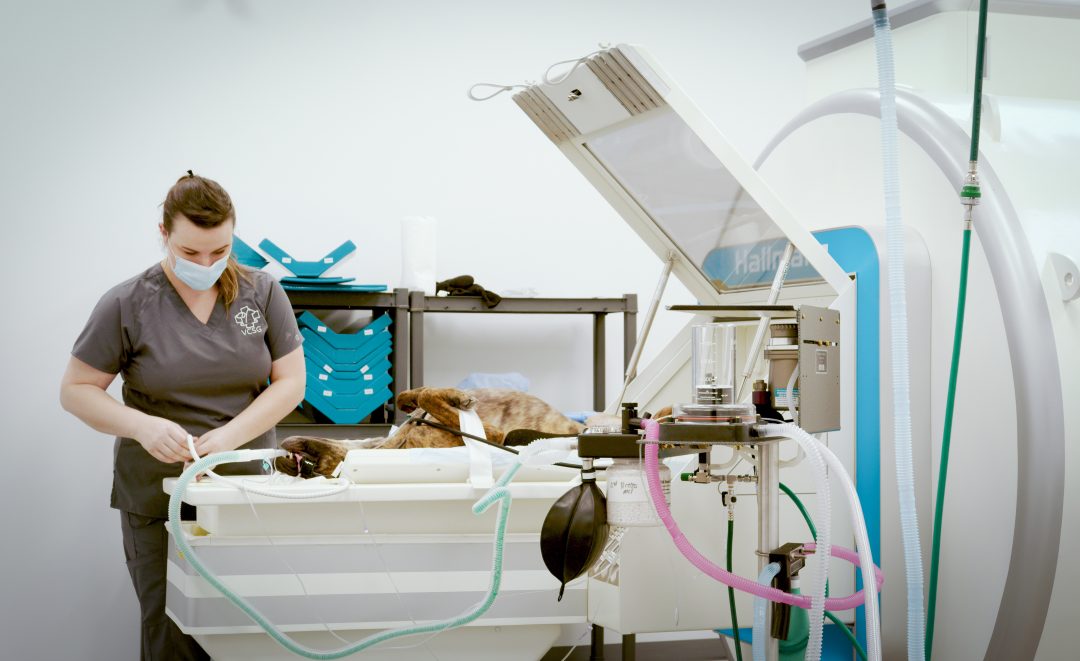Small animal MRI hasn’t always been affordable for pet owners, but that’s changing. The number of people who carry pet insurance has been trending upwards for years, and it’s seen a significant boost recently as more organizations offer pet insurance benefits to employees.
A survey from Willis Towers Watson found that 47% of employers currently offer pet insurance and predict that up to 69% will do so into next year and beyond. With better access to pet insurance, clients are more empowered and willing to authorize MRI scans.
Adding a small animal MRI service at your practice can significantly enhance your offerings, client satisfaction, patient care — and your bottom line. But before making the investment, you’ll want to ensure you have enough cases that qualify for veterinary MRI to justify the cost of the system.
Consider costs against caseload before thinking about offering veterinary MRI as part of your practice.
What is Your Current Caseload?
A practice’s first concern before adding small animal MRI services should be whether they can afford to make the investment. Audit your current caseload. Which cases do you see regularly that would warrant a small animal MRI? How many of these cases do you refer to another practice because you do not have an MRI?
Veterinary MRI is the best imaging tool for soft tissue cases (including brain and spinal cord), seizures and weakness, ear diseases, painful conditions you can’t localize, and behavior abnormalities indicating neurological problems. It can also be used to examine bony structures and is superior to other imaging modalities when evaluating muscles, tendons and ligaments.
How many of these cases are you currently seeing per month? Clinicians traditionally use CT imaging to diagnose many of these conditions because it’s quick and inexpensive, but in many cases, MRI studies give you twice the information in half the time.
If you consider scan revenue alone, a practice must conduct around 7 veterinary MRI studies per month to break even. Taking downstream revenue from surgeries into account drops the break-even number of scans needed per month to around 3 studies based on the number and cost of the surgical procedures.
Do You Have Access to a Neurologist’s Expertise?
Because MRI is the primary diagnostic tool for a neurologist, having a neurologist on your staff can easily bring in 15 to 20 studies per month alone, covering your monthly investment and turning a substantial profit.
However, recruiting a neurologist can be challenging, especially without an MRI already in place. As an alternative to traditional staffing models, the field of tele-consulting is just beginning to make its way into veterinary medicine. Whereas telemedicine links remote-first opinion clinicians directly to pet owners, tele-consulting links remote specialists, like a neurologist, directly to first opinion practitioners.
Remote clinicians can become adjunct members of a first opinion practice without the potential pain of attracting and retaining an in-demand specialist. Whether you are able to find a neurologist to bring on staff or partner with a tele-consulting service, you will need to closely evaluate whether you have all the support elements in place to maximize the efficiency of a veterinary MRI service.
All the benefits Hallmarq offers are designed to bolster a first opinion practitioner’s confidence and reduce the risks associated with offering MRI as a service.
Will Veterinary MRI be an Operational or a Capital Expense?
Before investing, decide whether you’ll classify an MRI system’s costs as an operational or a capital expense. Utilizing a subscription-based Hardware-as-a-Service (HaaS) model can be a highly affordable option, whereas a capital investment or outright purchase could require a loan and a longer period of time to break even.
Hallmarq offers a unique flat rate payment model on our 1.5T Small Animal MRI. By using the HaaS model, upfront capital expenditure is kept to a minimum. And with our built-in RF shield, there is no need to put upfront capital towards a purpose-built shielded room.
Once you determine which cases will benefit from MRI scans, the type of neurology support you need and your financial preference, you are well on your way to determine whether veterinary MRI is the right choice for your veterinary practice.




